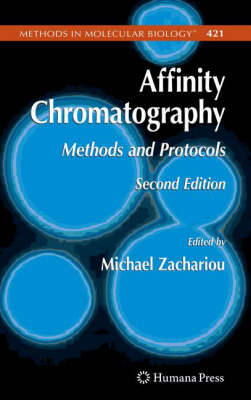Forty years after the term “affinity chromatography” was introduced, this mode of chromatography remains a key tool in the armory of separation techniques that are available to separation and interaction scientists. Affinity chromat- raphy is favored because of its high selectivity, speed, and ease of use. The rapid and selective isolation of molecules using affinity chromatography has allowed a better understanding of biological processes, accelerated the identi- cation of target molecules, and spawned new process areas such as immobilized enzyme reactors. It has had ubiquitous application in most areas of science ranging from small molecule isolation to biopolymers such as DNA, proteins, polysaccharides, and even whole cells. The number of applications of affinity chromatography continues to expand at a rapid rate. For example, more than 60% of purification protocols include some sort of affinity chromatography step, while a database search of PubMed reveals more than 36,000 publications making use of the term “affinity chromatography,” more than 3000 of which refer to it in their title. The US patent office reports more than 16,000 ref- ences to the term “affinity chromatography”, while there are more than 270 references to the same term in the patent title. The aim of this edition of Methods in Molecular Biology, Affinity Chromatography: Methods and Protocols, Second Edition is to provide the beginner with the practical knowledge to develop affinity separations suitable for various applications relevant to the post-genomic era.
- ISBN13 9781588296597
- Publish Date 30 November 2007
- Publish Status Active
- Publish Country US
- Imprint Humana Press Inc.
- Edition 2nd ed. 2008
- Format Hardcover
- Pages 348
- Language English
